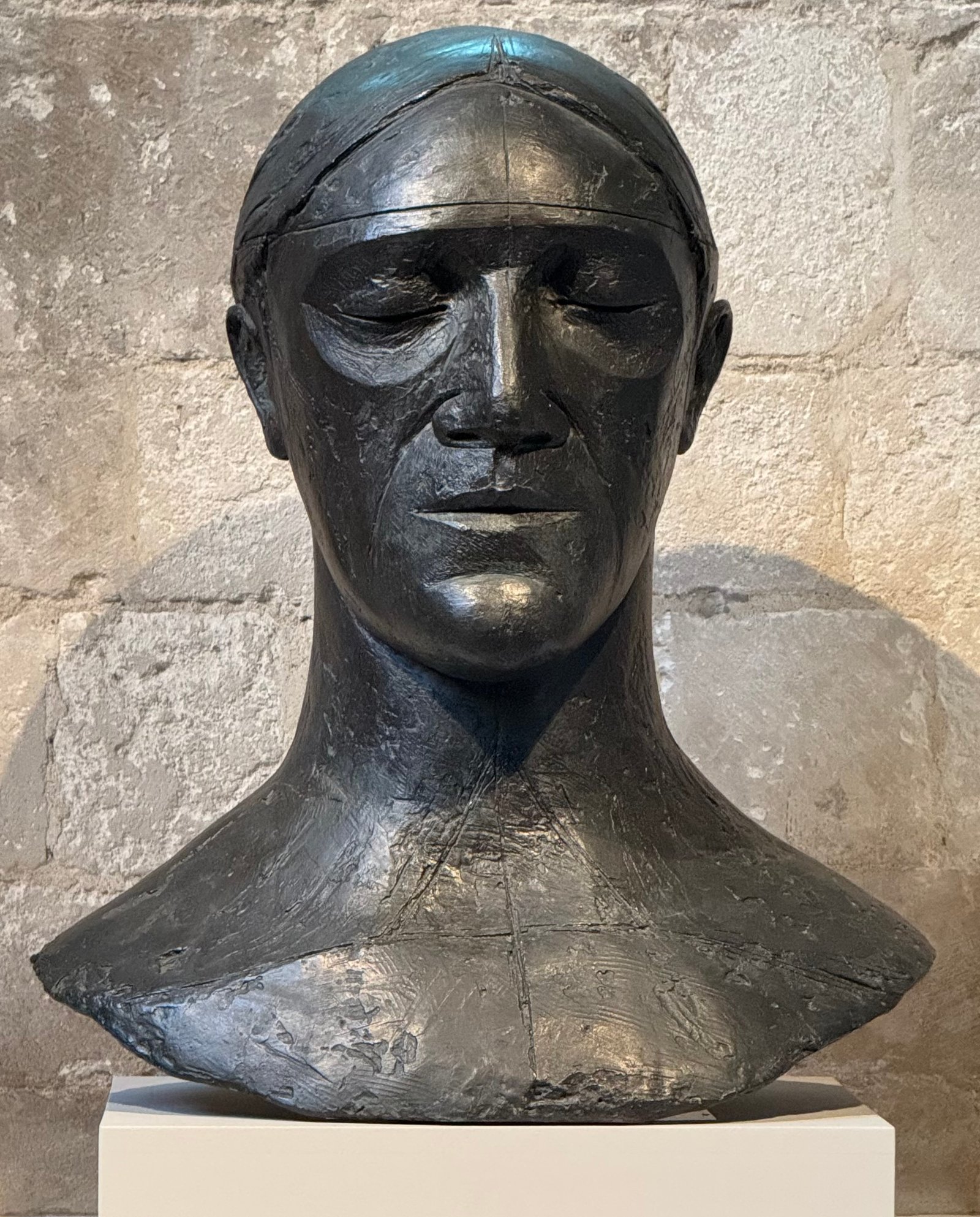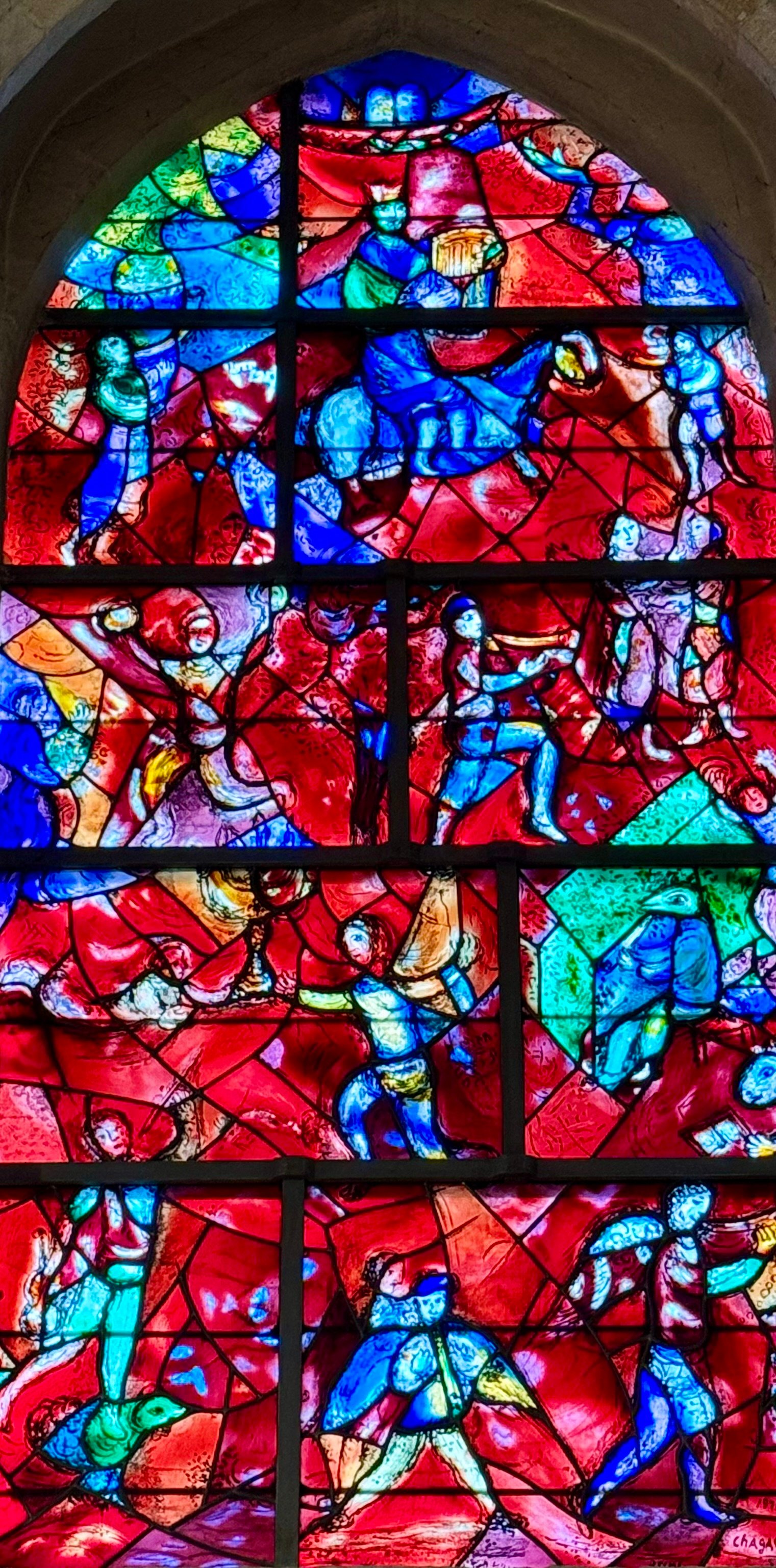Chichester Cathedral
23/02/25 18:58 Filed in: Christianity
I visited Chichester Cathedral earlier this month, at the end of a day's walking in the South Downs. Like other cathedrals, it is not only a place of worship but also a tourist attraction. It contains some artistic treasures which illuminate its Christian essence. So this is my takeaway from the visit.

This was not the first cathedral in Sussex. That honour goes to the monastery founded by St Wilfrid in the seaside town of Selsey, south of Chichester, which was awarded cathedral status in 681AD. It was nearly 400 years later, in 1075AD, that the bishopric moved to Chichester and construction work on the new cathedral started. It was consecrated in 1108. It survived the Reformation, and the destructive attention of the Parliamentarians during the Civil War, and continues to serve the community as an ecclesiastical centre.

Behind the High Altar is the Piper Tapestry, by the British artist John Piper. This was installed in 1966. Its central theme is the Holy Trinity of Father, Son and Spirit, represented by the white disc of the sun, the purple tau cross, and the feathered flame. Flanking these are depictions of the four elements of Earth, Air, Fire and Water. The tapestry was woven in France. Piper described it as "in some ways the most frightening commission” he had ever received.

This is a larger-than-life bronze sculpture of the head of Christ. It was sculpted by Elizabeth Frink in 1983. Unlike other works of art, it was not specifically commissioned for the cathedral but is on loan from a gallery. They say that Frink "depicts Christ as a universal figure, conveying a sense of humanity and relatability through using simplified human features and concentrating on facial expression. Christ's eyes are closed, conveying calm and serenity. The sculpture thus potentially leads the viewer into a sense of stillness, prayer and contemplation."

The Chagall window dates from 1978. Entitled "David", it is a representation of Psalm 150, depicting a series of musicians playing instruments named in this psalm of praise. David is at the centre, playing the harp. Red is the dominant colour, because red is the colour of triumph.
Entry to the cathedral is free, although they do invite visitors to make a small donation. That is usual in British cathedrals. About one in four charge for entry. Westminster Abbey is the most expensive, at £29. I do not like it when cathedrals charge for entry, but that's because I see them as places of worship rather than tourist attractions. And I accept that maintenance costs a lot of money, and cathedrals have to find it from somewhere.